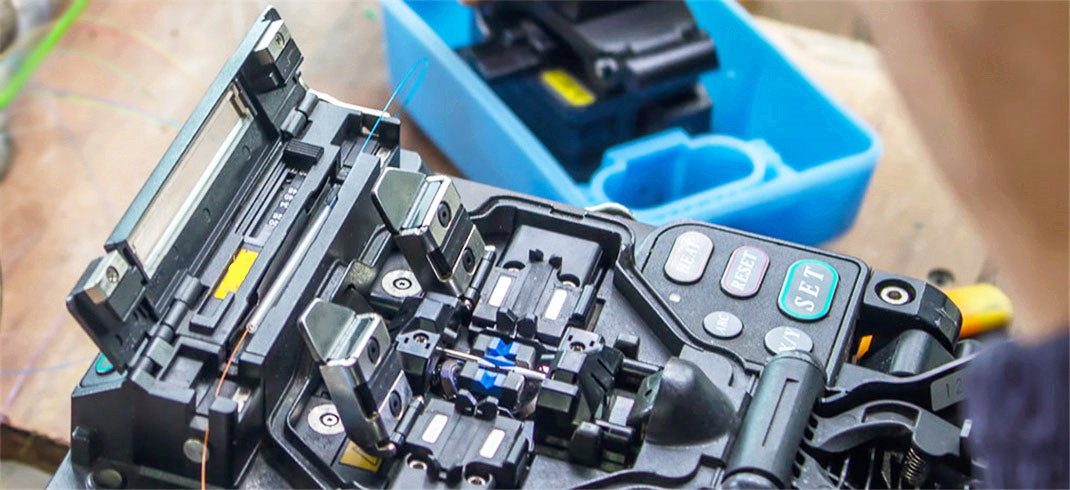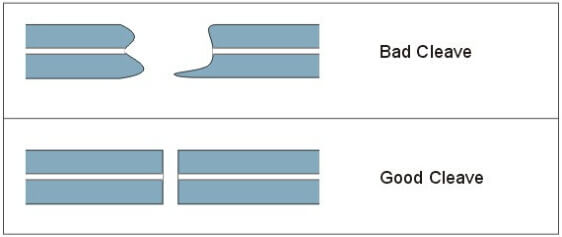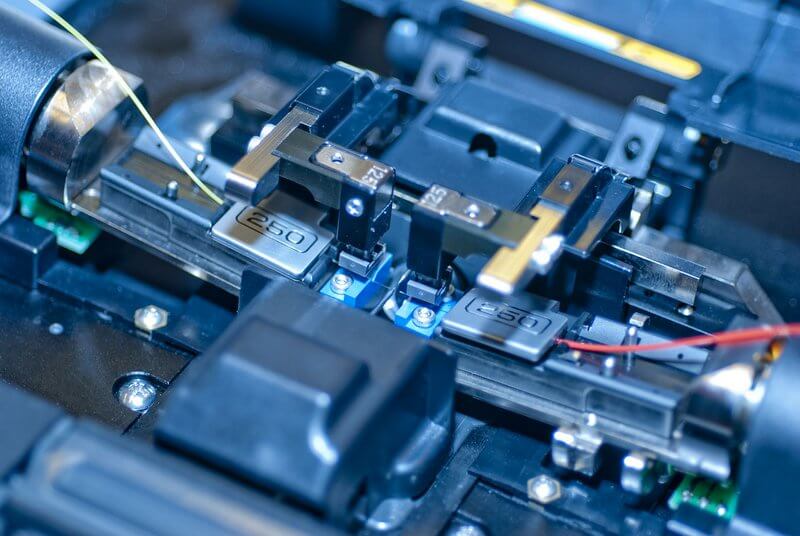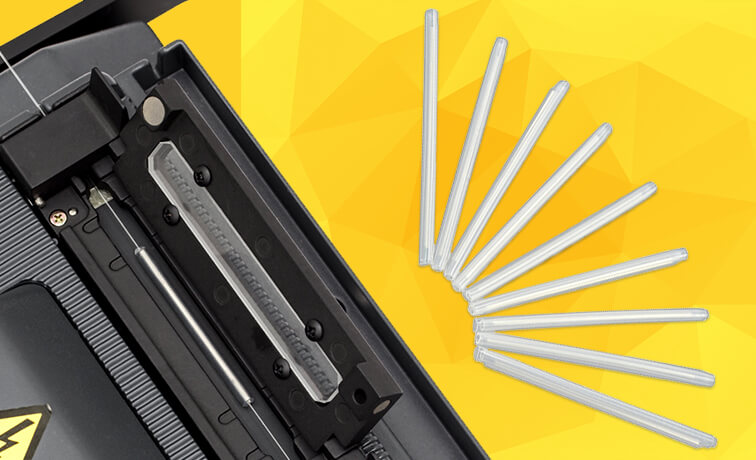- English
- German
- French
- Spanish
- Japanese
- Italian
- Chinese
- Chinese (traditional)
- Home
- Blog
- Case Study
- Knowledge Center
- Glossary
- Story
- Video
- Blog Type
- Product
- Topic
- Region
Hot Search
- Product Updates
- Share FS
- PoE Switch
- Networking
- Networking Devices
- Home
- Blog
- Case Study
- Knowledge Center
- Glossary
- Story
- Video
-
- Home
- Blog
- Case Study
- Knowledge Center
- Glossary
- Story
- Video
- Blog Type
- Product
- Topic
- Region
- Home
- Blog
- Case Study
- Knowledge Center
- Glossary
- Story
- Video
- English
Hot Search
- Product Updates
- Share FS
- PoE Switch
- Networking
- Networking Devices
Fusion Splice vs. Mechanical Splice

Fusion Splice vs. Mechanical Splice
When talking about fiber optic splicing, there are two methods of splicing that can be selected. One is fusion splicing, and the other is mechanical splicing. If you are just beginning to splice fiber, you might want to look at your long-term goals in this field in order to choose which technique best fits your economic and performance objectives. This tutorial will talk about these two methods respectively and then have a comparison between the two.
Definition of Fusion Splice and Mechanical Splice
Both fusion and mechanical splicing accomplish the same thing—they bring two optical fibers together and hold them that way so that an optical signal can pass through the join. More detailedly, fusion splice is a junction of two or more optical fibers that have been melted together. This is accomplished with a machine called fusion splicer that performs two basic functions: aligning of the fibers and melting them together, typically using an electric arc.
Mechanical splices are simply alignment devices and don’t permanently join two fibers together, designed to hold the two fiber ends in a precisely aligned position thus enabling light to pass from one fiber into the other.
Process of Fusion Splice and Mechanical Splice
There are four basic steps involved in fusion splice and mechanical splice. For both the two methods, the first two steps are nearly the same, and there’s a little difference for the last two steps.
Steps for Fusion Splice
Step 1: Fiber preparation. Fibers are prepared by stripping away all the protective coatings, such as cladding, jacket and sheath. Once only bare glass remains, the fibers are carefully cleaned--and here, cleanliness is next to godliness.
Step 2: Cleaving. Cleaving isn't cutting. As the word implies, it’s scoring the fiber using a cleaver and pulling or flexing it until it breaks. The cleaved end must be mirror-smooth and perpendicular to the fiber axis to obtain a proper splice.

Step 3: Fusing the fibers. Fusion, in turn, consists of two steps: aligning and heating. Alignment can be fixed or three-dimensional, manual or automatic, and is normally accomplished with the aid of a viewer that magnifies or enhances the images of the fiber ends, so that they can be properly positioned. Common magnifying devices are video cameras, viewing scopes and optical power meters. Aligning the fibers means perfectly matching up their two ends, so that light can pass from one fiber to the other with a minimum of loss, reflection or distortion. Once the fibers are aligned, they are fused or burned together by generating a high-voltage electric arc that melts the fiber tips, which are then pushed or fed together.

Step 4: Protecting the fiber. Protecting the fiber from bending and tensile forces will ensure the splice not break during normal handling. A typical fusion splice has a tensile strength between 0.5 and 1.5 lbs and will not break during normal handling but it still requires protection from excessive bending and pulling forces. Using heat shrink tubing, silicone gel and/or mechanical crimp protectors will keep the splice protected from outside elements and breakage.

Steps for Mechanical Splice
As previously mentioned, the differences between the two lie in the last two steps. Thus, the step 3 and step 4 for mechanical splices are described below.
Step 1 and 2: see the process for fusion splice.
Step 3: Mechanically join the fibers. There is no heat used in this method. Simply position the fiber ends together inside the mechanical splice unit. The index matching gel inside the mechanical splice apparatus will help couple the light from one fiber end to the other. Older apparatus will have an epoxy rather than the index matching gel holding the cores together.
Step 4: Protect the fiber. The completed mechanical splice provides its own protection for the splice.
Fusion Splice vs. Mechanical Splice: Which to Choose?
The typical reason for choosing one method over the other lies on the cost and performance.
Cost
Fusion splice typically has a higher initial investment due to the investment required to add a fusion splicing machine to your toolkit, but it offers a lower variable cost per fusion splice: $0.50 to $1.50 per splice.
Mechanical splice doesn’t require a large upfront investment in tools, but it has a higher variable cost at $10 to $30 per splice. The more splicing you do, the less cost-efficient mechanical splice will be due to its high variable cost per termination.
Performance
With mechanical splice, the typical insertion loss (IL) is higher—between 0.2 dB and 0.75 dB. This is because the two fibers are simply aligned and not physically joined. (Insertion loss is the loss of signal power resulting from the insertion of a splice in optical fiber.)
Fusion splice offers lower insertion loss and better performance, because fusion splice provides a continuous connection between two fibers. The typical loss in fusion splice is < 0.1 dB, providing better protection against cable failure and weak signals.
Conclusion
Overall, the advantages of fusion splice are primarily lower loss and better reflectance performance. It is in these areas that it surpasses mechanical splice. Many telecommunications and CATV companies invest in fusion splice for their long haul single-mode networks, but will still use mechanical splice for shorter, local cable runs. Since analog video signals require minimal reflection for optimal performance, fusion splice is preferred for this application as well. The LAN industry has the choice of either method, as signal loss and reflection are minor concerns for most LAN applications.
You might be interested in
Email Address

-
PoE vs PoE+ vs PoE++ Switch: How to Choose?
May 30, 2024













